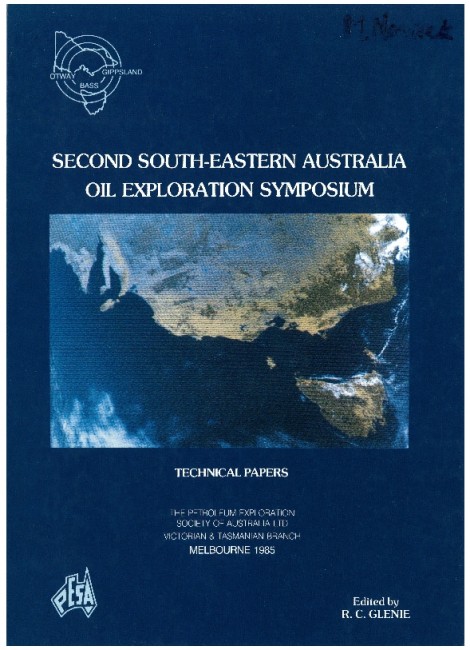Publication Name: Second South-Eastern Australia Oil Exploration Symposium - Technical Papers
Authors: B.R. Thompson
Date Published: December 1986
Number of Pages: 20
Reference Type: Book Section
Abstract:
The Gippsland Basin is a post-Early Cretaceous and hydrocarbons within a 4500 m thick sedimentary pile. Tectonic activity in the Late Cretaceous resulted in the formation of a narrow graben over an infilled. Early Cretaceous rift and gradually enlarged to spread across the earlier feature as downwarping continued during the Tertiary.The stratigraphic scheme generally applied to the offshore basin sequences describes two main sedimentary
post-Early Cretaceous groups. The oldest is a Late Cretaceous-Early Tertiary sequence, the Latrobe Group, consisting of predominantly fluviatile-deltaic units that show evidence of increasing marine influence in the Late Eocene and Oligocene, in the form of barrier sands and shallow marine units. The other major sequence, the overlying Seaspray Group, consists of shelf limestone and marls of Oligocene to Late Miocene age. This stratigraphic scheme is in contrast to that used to describe the sequences of the Otway Basin where four main transgressive-regressive sedimentary cycles, associated with worldwide sealevel changes, have been recognised.
However, evidence is accumulating that a number of these cycles can also be recognised within the Gippsland Basin. One unit, called here the Cobia Group, is bounded by two erosional events and incorporates the thin veneer of marine sediments covering the 'coarse clastics' within the Latrobe Group which is now redefined.
These sediments are equivalent in age to the Nirranda Group of the Otway Basin, and their nonmarine facies equivalents are probably represented by the coal-rich Traralgon Formation in the onshore basin area; an intermediate barrier system lies offshore from the present coastline. Other sedimentary units can also be recognized within the Late Cretaceous part of the Latrobe Group.
The western limit of the overlying Seaspray Group lies thirty kilometres inland of the present coastline and is represented in the subsurface by a thick stacked sand-barrier system. The time-equivalent lignite-rich Latrobe Valley Coal Measures lie to the west behind it; a similar facies relationship occurs in the Seaspray Depression to the south. A Middle Miocene regression brought marine sedimentation to an end in the western part of the basin, except for a short-lived final Pliocene marine transgression.
The structural development of hydrocarbon traps in the Gippsland Basin involved wrench movements that commenced in the Eocene. These movements culminated in the Middle Miocene when reversal on some of
the earlier faults elevated isolated blocks of the Strzelecki Group. While the Strzelecki Highlands were uplifted, anticlinal features developed basinwards in the overlying Latrobe Group sediments. Similarities are noted between the onshore partly exposed structures and some of the buried hydrocarbon-bearing structures offshore.


